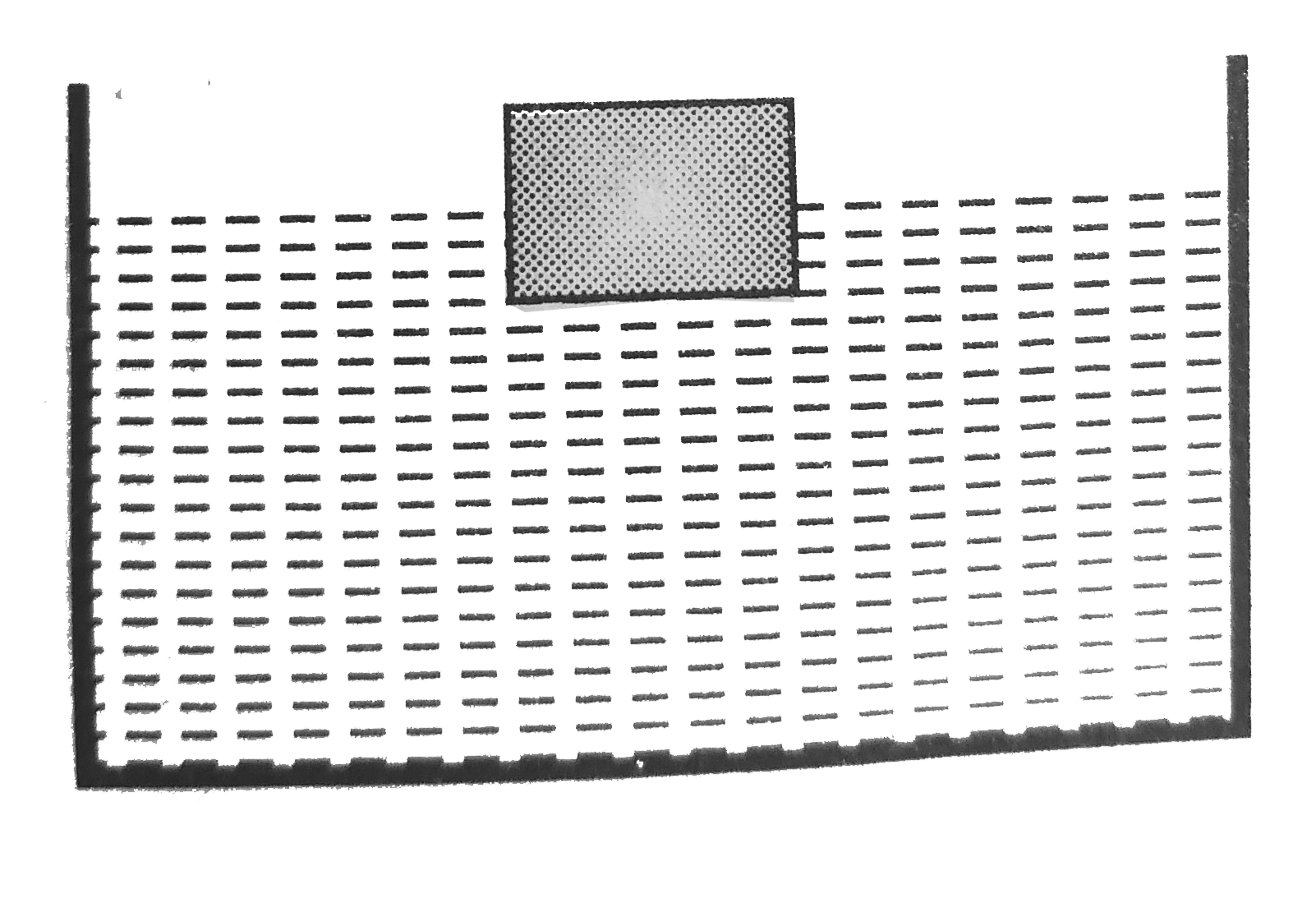A non-conductiong body floats in a liquid at 25∘C with 1/3 of its volume immersed in the liquid. When liquid temperature is increased to 105∘C, 1/2 of body's volume is immersed is the liquid. Then, find the coefficient of real expansion of the liqquid (neglecting the expansion of container of the liquid) .
Coefficient of real expansion,
γR=V2−V1V1(t2−t1)
Here, V2=12,V1=13
and (t2−t1)=(105−25)=80∘C
therfore Putting these values, in Eq. (i) we get
γR(12=13)1/3(80)=1160
=62.5×10−4∘C−1
Topper's Solved these Questions
- THERMOMETRY THERMAL EXPANSION AND KINETIC THEORY OF GASESBOOK - DC PANDEYCHAPTER - THERMOMETRY THERMAL EXPANSION AND KINETIC THEORY OF GASESEXERCISE - Check point 14.1
10 Videos
- THERMOMETRY THERMAL EXPANSION AND KINETIC THEORY OF GASESBOOK - DC PANDEYCHAPTER - THERMOMETRY THERMAL EXPANSION AND KINETIC THEORY OF GASESEXERCISE - Check point 14.2
20 Videos
- SUPERPOSITION OF WAVESBOOK - DC PANDEYCHAPTER - SUPERPOSITION OF WAVESEXERCISE - Level 2 Subjective
8 Videos
- THERMOMETRY,THERMAL EXPANSION & KINETIC THEORY OF GASESBOOK - DC PANDEYCHAPTER - THERMOMETRY,THERMAL EXPANSION & KINETIC THEORY OF GASESEXERCISE - Level 2 Subjective
9 Videos
Similar Questions
A solid floats in a liquid at 20∘C with 75 % of it immersed. When the liquid is heeated to 100∘C, the same solid floats with 80% of it immersed in the liquid. Calculate the coefficient of expansion of the liquid. Assume the volume of the solid to be constant.
View SolutionA cubical block is floating in a liquid with half of its volume immersed in the liquid.When the whole system accelerates upward with a net acceleration of g/2 the fraction of volume immersed in the liquid will become
View Solution
Knowledge Check
A non-conducting body floats in a liquid at 20∘C. with 2/3 of its volume immersed in the liquid When liquid temperature is increased to 100∘C,3/4 of body volume is immersed in the liquid. Then the coefficient of real expansion of the liquid is... (neglecting the expansion of container of the liquid)
A1.56×10−4/∘CB15.6×10−4/∘CC1.56×10−5/∘CD15.6×10−5/∘CA wooden cylindrical block floats vertically with 70% of its volume immersed in a liquid at 0∘C . When temperature increases to 70∘C , the block sinks in the liquid. The coefficient of cubical expansion of liquid in K−1 is
A12.6×10−3K−1B61.2×10−3K−1C6.12×10−3K−1D6.00×10−3K−1A cubical block is floating in a liquid with half of its volume immersed in the liquid. When the whole system accelerates upwards with acceleration of g/3, the fraction of volume immersed in the liquid will be
 A12B38C23D34
A12B38C23D34
A cubical block is floating in a liquid with half of its volume immersed in the liquid.When the whole system accelerates upward with a net acceleration of g/2 the fraction of volume immersed in the liquid will become
View SolutionA cubical block is floating in a liquid with half of its volume immersed in the liquid. When the whole system acelerates upwards with a net acceleration of g/3. The fraction of volume immersed in the liquid will be 3x Find x.
View SolutionA block of density ρ floats in a liquid with its one third volume immersed. The density of the liquid is
View SolutionA cubical block is floating in a liquid with half of its volume immersed in the liquid. When the whole system accelerates upwards with a net acceleration of g/4, the fraction of volume immersed in the liquid will be
View SolutionA cubical block is floating in a liquid with one fourth o its volume immersed in the liquid. If whole of the system accelerates upward with acceleration g/4, the fraction of volume immersed in the liquid will be :-
View Solution
